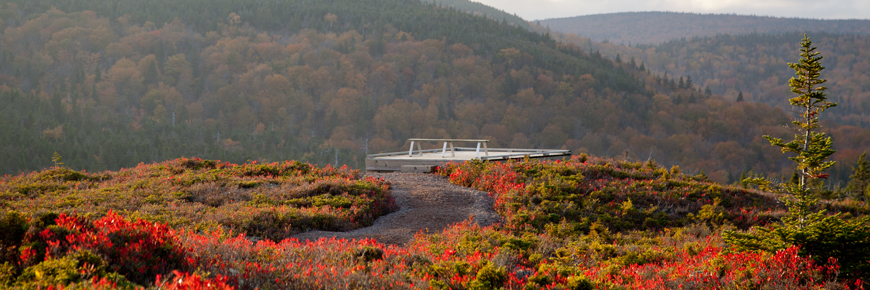
What you can do
Cape Breton Highlands National Park
You can help protect species at risk both inside the park and out.
- Don't remove anything from the park. All animals and plants are important and they depend on each other to survive. Even the non-living things such as rocks help create unique habitats which make up part of the ecosystem.
- Don't wander off trails. Your feet may crush small plants and animals that could be at risk.
- Use all-terrain vehicles responsibly. ATVs are illegal inside the park but even outside, be careful about where you drive. Don't drive on beaches with nesting birds or on bogs. Bogs and rocky barrens have mosses and lichens that are easily crushed and take a long time to grow back once destroyed. Remember, driving on bogs is now prohibited by law throughout Nova Scotia.
- Don't disturb wildlife in any way. For example, feeding wildlife is harmful. Species can lose their fear of humans and then become dangerous. Also, animals can start to rely on humans for food and stop gathering food for themselves.
- Keep dogs on a leash when in a national park or protected area. Dogs can disturb nests of birds and animals. They can also chase animals, thereby disturbing or killing them.
- Ask for information on monitoring in the park such as the herpetiles and the birds of prey monitoring programs.
- Report rare species or species at risk on our wildlife observation cards found at the information centres, campground kiosks and the warden offices.
- Date modified :